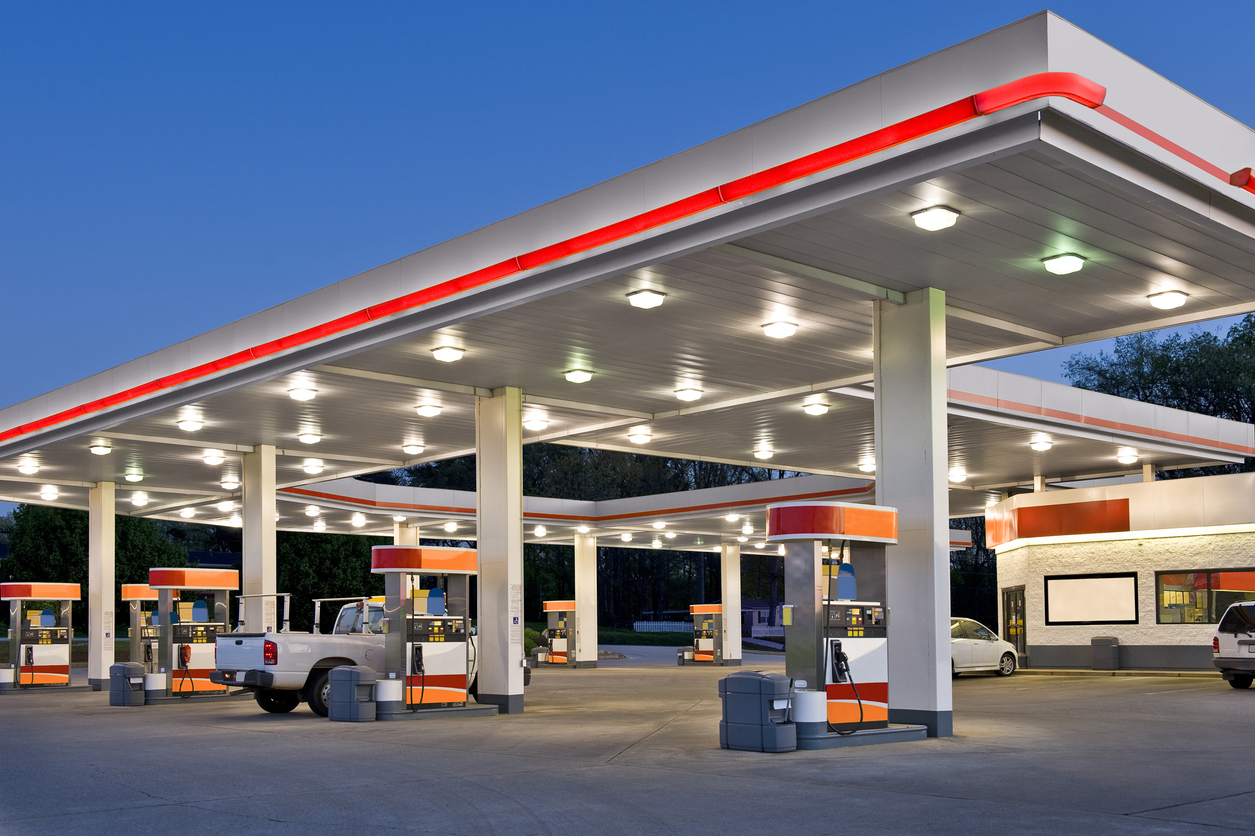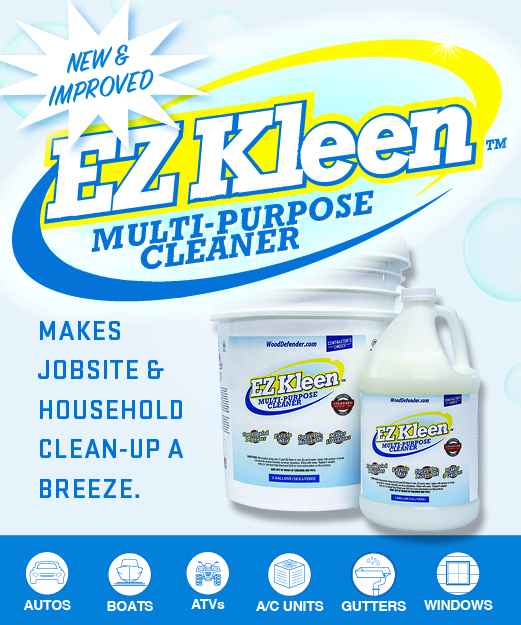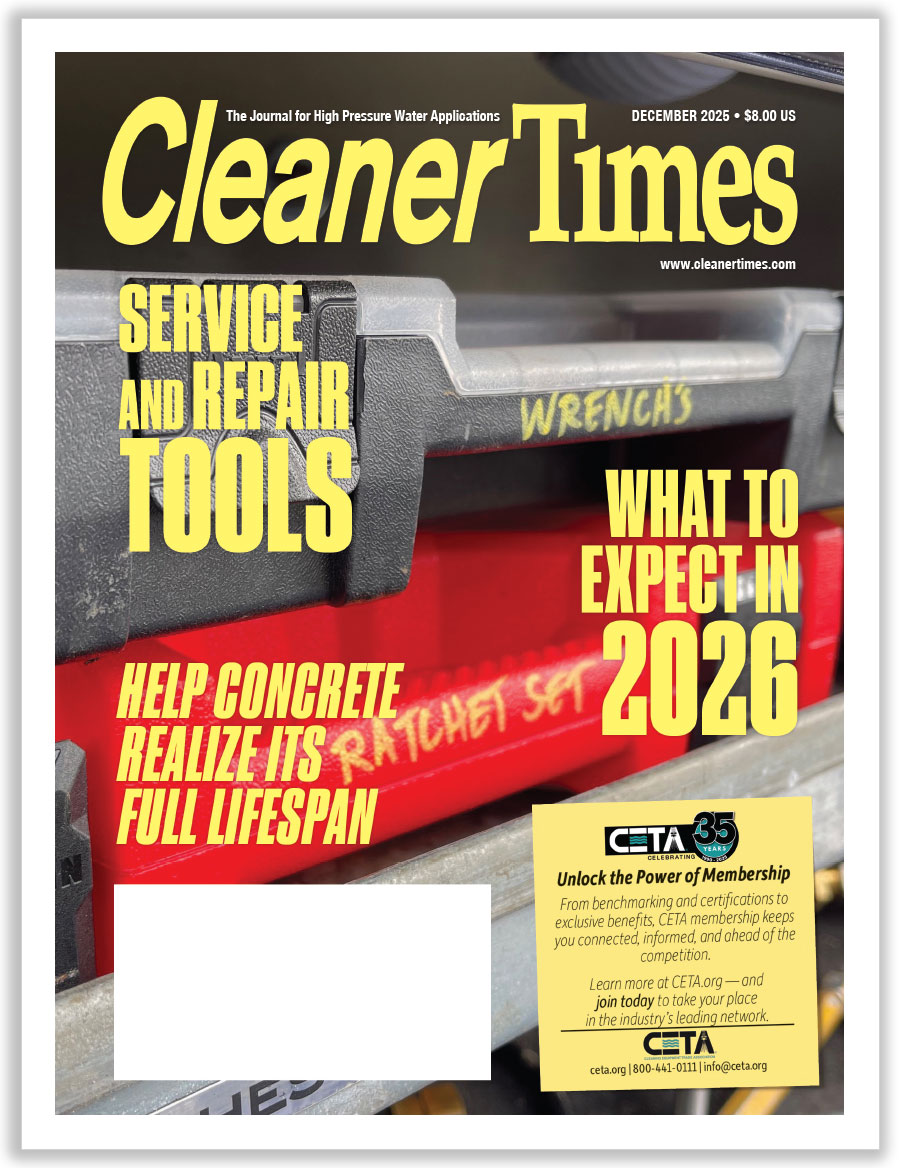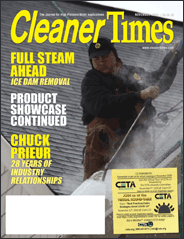
Cleaning Gas Stations
by Diane M. Calabrese | Published May 2025

Gum, graffiti, grease, and other gunk known well to contractors accumulate at gas stations.
Good news: There’s plenty of cleaning to be done at the facilities.
Bad news: It’s not easy.
Reading through some of the posts on the contractor discussions in the digital world, we get the idea that one of the biggest challenges is the most mundane: removing gum and being compensated for the time it takes. It’s a conundrum and contractors who do not charge by the hour may find their profit diminishing with every tacky encounter.
Best way to charge for cleaning substrate – pavement or walls — at a gas station is by the hour. The problem is that many owners want to pay a per square-foot price.
With experience a contractor can probably arrive at an equitable arrangement. But when just starting out cleaning for a new client, the contractor may lose some money.
Given there are about 100,000 gas stations across the United States, shunning them could be a bad idea. Of course, not all stations are alike. Some attach to convenience stores, while others are located on interstate highways and part of complexes owned by states. The latter are most likely to be jobs to be gotten through bids.
Bucolic gas stations along the network of roads that tie together towns and cities together, are ever rarer. Yes, there was a time when a gas station attendant wore a uniform, checked oil, cleaned windows, and pumped gasoline. Moreover, stations could repair or replace tires on the spot.
Now, instead of a service bay with lift, a gas station is likely to have a convenience store. Times change.
But the gum, graffiti and grease are somewhat constant. Taking a close look at the job before giving an estimate is always the place to begin.
Chris LeBas, president of Exterior Cleaning Services Inc. in Lafayette, LA, says that it’s important that the client and the owner agree on outcomes. The better the client understands what can and cannot be accomplished, the more satisfaction there will be with a good result.
LeBas tells us something about his background with gas stations. And he introduces us to some of the factors that led him to reduce his service in the niche,
“Hot water is best and most effective on oil, grime, and especially gum,” says LeBas. “However, after owning two hot water pressure washers over the last 27 years, several years ago, I chose to move out of the gas station cleaning and eventually replaced the hot water units with cold water units.”
LeBas still has a hand in cleaning stations. “We do currently have one station we serve quarterly with our cold-water units,” he explains. “While hot water is best, a good degreaser with cold water will achieve great results.”
Gum does not respond as well to cold water, though. “Gum removal is very difficult without the hot water which melts off the gum,” says LeBas.
“When we met the owner of the [station], we made it clear how we would be cleaning and what the results would be,” says LeBas. “So, the key is setting reasonable expectations with the customer.”
Beyond gum removal, there’s the challenge of getting the work done at night. “Working at night is difficult, but necessary,” says LeBas.
“If you try to clean during the day, even during off-peak hours, traffic control is a significant challenge,” says LeBas. “The problem for me years ago, when I was solo for the most part, is I tried to work at night and also the next day.”
The split schedule – double schedule – led LeBas to the conclusion that it was in his best interest to focus on residential work. As for which parts of a gas station are the most difficult to clean, it’s generally the place that sees the most activity.
Even when working at night, there’s the possibility of an interruption. Most fuel deliveries are made at night.
If there’s a canopy over the pumps, the area under the canopy is what owners want to have cleaned. It may be concrete or asphalt, so a contractor must think about matching method to the type of substrate.
The canopy and the building also need periodic cleaning. But owners may not have those structures cleaned as often.
Given how many gas stations now combine with convenience stores, the opportunities for contractors extend to windows and store exteriors. Independent gas station owners – of which there are not many, often take on their own cleaning. But a contractor might be able to persuade them to put down their DIY machine and pay a professional power washing contractor.
Since most cleaning at gas stations is done at night, gas pumps can be included in the job. Cleaning pumps – from top to bottom, is a manual task. And the owner or employees probably tackle it each day with an appropriate surface cleaner and towels and water. Distributors can recommend formulations made specifically for pump surfaces, including protection from UV.
Good Advice
Turn to the 2016 article in the Pressure Washer’s Guidebook: Gas Stations/Convenience Stores by Tim Moore for a concise introduction to tackling grime for clients in the sector. (See https://www.cleanertimes.com/magazine/cleaner-times-articles-2/gas-stationsconvenience-stores/.)
CAF Outdoor Cleaning, a group that aims to assist convenience store owners with business offers a line of products, such as degreasers, especially geared to gas-pump settings at convenience stores. See the company’s website (Mycaf.com) for how-to suggestions on cleaning pumps and more.
PumpTex Inc. (PumpTex.com), a company that serves the retail end of the petroleum industry, maintains gas pumps with maintenance that includes repair, calibration and cleaning. Contractors will gain a fine introduction to recommended pump practices by reading about them on the company’s website. Do not use a cleaner that is too harsh (e.g. ammonia-based) because it can weaken the components of pumps (e.g. bezel doors) is one PumpTex tip.
Reading through background resources such as those mentioned in the three preceding paragraphs provides a contractor with a good grounding for going out and bidding on or giving an estimate on a gas station cleaning job. In other words, being conversant in the industry’s language.
Also know something about the origin of the gasoline that arrives at the retail pumps. Domestic crude oil and imported crude oil are refined and then stored in tanks or pipelines (yes, the extensive network of pipelines in the USA stores as well as moves refined oil) to bulk terminals where it is stored for pickup and delivery by tanker truck to gas stations. (Learn more at the Energy Information Agency, EIA.gov, website.)
States have different requirements that gasoline must meet. The specifications are met at the storage terminals where gasoline is processed into finished grades. Such storage terminals are called blending terminals. Usually, it’s at the blending terminals where ethanol is added. (The United States also imports both motor-grade gasoline and blending components.)
Gasoline at the pump differs little from one brand to another. Additives may be proprietary in a gasoline brand. But the gasoline moving from a pump to a car may not be the brand on the label or marquee. The semi-loose labeling system is all sanctioned by regulators.
Most gasoline at retail outlets is stored in underground storage tanks (USTs). There are also above ground storage tanks (ASTs), which are found mostly at industrial facilities.
Safe practices at gas stations overlap with environmental stewardship. On the safety side, just as no one should ever dispense gasoline to a car with a running motor, care must be taken using diesel- or gasoline-powered pressure washers near pumps.
Before working at a closed gasoline station be sure to review safety features with the owner, such as emergency power cutoff. And be sure the pumps are shut down for the night. The owner will have required extinguisher(s) onsite. But the contractor should also be carrying an extinguisher. (Cigarette butts have gotten no mention because gasoline stations and smoking are mutually exclusive.)
The station may have a sanitary sewer the contractor can use to dispose of wash water. Certain jurisdictions require that the contractor collect the water and haul it away to a disposal site that handles fuel and chemical (petroleum product) contaminants.
When talking with a prospective client about cleaning the gas station he or she owns/operates, the more assurance that can be provided about the way safety and environmental protocols are followed, the more receptive the potential client will be. The assurance can easily be handled by a short paragraph on the estimate form/pdf.
There has been a steep decline in the number of retail gas stations in the United States since 1994 (source: Fueleconomy.gov). In 1994, there were more than 200,000 places where gas was sold. Consolidation explains the halving of stations across 30 years.
Now, with more EV vehicles, there is further attrition ongoing. Electric charging stations must still be cleaned. But because they do not have residues from gasoline and motor oil, they are easier to clean.
Make that easier except for the gum and graffiti.





